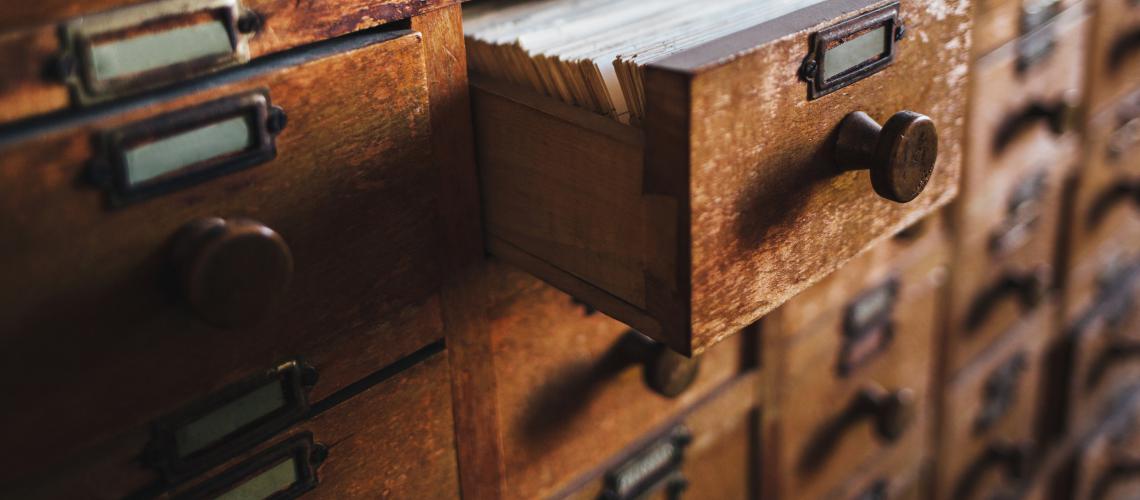There are quite a few very useful glossaries and encyclopedias for conservators in the internet.
Basic definitions
- The "Terminology to characterize the conservation of tangible cultural heritage" describes the terms "preventive conservation, remedial conservation and restoration".
- The AIC offers definitions of conservation terminology where basic termini are briefly explained.
- Understanding conservation offers a glossary of terms with several explanations of conservation and art terms. It comes f.e. with a definition of "authentic" or "conservation strategy" or "conservation principles or criteria".
Glossaries for conservators
- The visual glossary is a Project by AICCM. It comes with a brief description and at least one picture. It is nice to browse.
- The AIC Wiki has quite an extended glossary and terminology for conservators. You can find definitions for damages, materials, processes, methods there. A very useful page.
- There is also a Lexicon for conservators in the AIC-Wiki. Here you will find a bit more Extended description of the word as well as references. You will also find translations of it into other languages like French, Spanish, Portuguese, Italian, German, Russian and Arabic.
- The International Dunhuang Project offers a glossary for conservators where the main termini, methods, damages, materials, including some pigments are described.
- The Conservation Center for art & historic artifacts published a glossary of General conservation and preservation terms. It includes basic termini including e.g. conservation, preservation and restoration. It is a PDF-document.
- Another list of glossary of terms was published by the Nebraska State Historical Society. It gives an description for each term. It has basic terms but also some more specific and some trade names.
- On the AIC-Wiki we also find a glossary included in the Tape and Adhesive Removal chapter. It deals with the different termini of sticky tapes and adhesives and is therefor fairly interesting for anybody who finds sticky tape on artifacts.
- A few termini are explained in the glossary of the NPS Conservation site. It is related to the case studies so the choice of termini in the glossary depends on the specific treatment of objects.
- The UNESCO offers a glossary of terms relating to the implemantation of the world heritage convention.
Glossaries for paintings' conservators
- The Smithsonian Museum Conservation Institute has published a list of terms about painting conservation.. It gives a brief definition of painting techniques, damages, and materials.
- The AIC-Wiki offers a glossary on General stretcher and starainer definitions which looks very useful.
- Hudson+salah art conservation published a list of conservation terminology on their site.
- The Canadian Conservation Institute offers a fairly complete glossary for paintings. There are some illustrations as well. There is a definition for each term.
- The Fine Arts Conservancy provides us with a very nice glossary for paintings. It is illustrated with many pictures and examples and therefor very useful especially in case of damages.
- Van Witt Fine Art Conservation offers a PDF-document with glossary of Terms. It looks fairly complete and offers brief explanations for every term.
- The West Lake Conservators have a similar glossary of conservation & technical terms on their page.
- Artrestorations also offer a glossary of conservation terms.
- Barrett M. Keating Conservators provide us with a glossary of restoration and conservation terms as well.
Glossaries for paper conservators
- List of termini for the description of damages on paper, some materials and conservation methods. Further down there is also a glossary for adhesives. It's part of the AIC Wiki (http://www.conservation-wiki.com/wiki/BPG_Glossary_of_Terms).
- Conservation Resources published a glossary that seems to be fairly complete. It includes termini from photo conservation.
- . The paper conservation glossary gives you some information about terms used in paper conservation. It is a PDF-document provided by the conservation center for art & historic artifacts.
- The glossary of archival and records terminology is mainly meant for archivists but there are also some termini explained that belong to conservation. It's a PDF-document free to download, published by SAA in 2005.
- The PDF-document Descriptive terminology for works of art on paper. Guidelines for the accurate and consistent description of the materials and techniques of drawings, prints, and collages. is a very useful book (182 pages!) about the description of graphical arts. It was written by Nancy Ash, Scott Homolka, and Stephanie Lussiert with Rebecca Pollak and Eliza Spaulding.
- The UNESCO has published a glossary on digital preservation and archival termini. It is a PDF-document.
- The Multilingual Glossary for Art Librarians (English with indexes in dutch, french, german, italian, spanish and swedish) is a very useful PDF-document, that comes with a definition and a lot of translations into these languages.
- There is a nice collection of termini for paper and book conservators - called Glossary on Paper conservation in six languages. published by the Goethe-Institut. It is nicely illustrated. There is a Version in english, german, chinese, korean, mongolian and japanese. It is like an illustrated dictionary and gives translations of many words. There are more than 500 pages to each PDF-document.
- Books. The Terminoloy for the conservation and description of islamic manuscripts offers terms and definitions about the arabic book. There is also an index of terms available.
- Books. The National Library of Australia offers a Library preservation glossary>. It explains most of the terms used in paper/ book conservation.
- Books. On CoOL there is a dictionary of descriptive terminology for bookbinding and the conservation of books. You can use the search engine or browse by clicking onto the corresponding chapter. It looks fairly complete and includes materials, techniques, termini and conservation vocabulary. Each term comes with a short description. There are also some color plates with some historic bindings.
- Books. The Conservation Center for art & historic artifacts has published two illustrated guedes to book terminology. The first part deals with the terminology of book structure. The second part explains the terminology of conservation treatment of books. Both are PDF-documents.
- Books. The Multilingual Bookbinding and Conservation Dictionary can be useful translation tool of termini as it made to be in various languages (english, dutch, danish, french, german, italian, spanish, swedish). Definitions or articles are rare. Not every entry is translated into all the languages though. Looks like there is still a bit to do.
- Photography. On CeROArt there is a damage atlas for photographic materials. It explains forms and types of damages, but also includes a sort of thesaurus and gives a tree structure of damages which possibly can be used a glossary.
- Photography. The Conservation Center for art & historic artifacts offers a PDF-document with a photograph conservation terminology. There structure and treatment terms are explained.
- Photography. The AIC-Wiki has a glossary explaining briefly the different kinds of photograhic prints and other descriptive terminology.
- Photography>. On the Daguerreotype Research Portal there is a very complete lexicon on damages and photographic processes (you might have to login, but you can do so as a guest). Many entries of damages come with a photo and are therefor very useful for conservators.
Glossaries for stone conservators
- ICOMOS-ISCS published a PDF-document called Illustrated glossary on Stone Deterioration Patterns/ Glossaire illustré sur les formes d'altération de la pierre. It has 86 pages and looks fairly complete. There are also quite a few illustrating pictures.
- A free glossary PDF-document with 450 pages is EwaGlos. European illustrated glossary of conservation terms for wall paintings and architectual surfaces. English definitions with translations into Bulgarian, Croatian, French, German, Hungarian, Italian, Polish, Romanian, Spanish and Turkish. There are also several Illustrations. It explains about 200 terms and has an extensive bibliography. EwaGlos is a project of the EU. There is now a 2nd revised digital edition and an arabic translation available.
- There is a glossary of arabic terms for the conservation of cultural heritage (PDF, 28 pages) published by ICCROM. It is more an dictionary arabic-english and doesn't offer definitions.
Glossaries for describing art and architecture
- The Getty Research Institute provides us with an Art & Architecture Thesaurus. It is based on a search engine, so you need to know the word you would like to look up, you can't just browse. Once you found your entry there is a short definition and possibly translations of the term into other languages.
Glossaries for digital preservation
This is based on the blog From AIP to Zettabyte: Comparing Digital Preservation Glossaries by Bill LeFurgy from 2012
- The glossary of archival and records terminology is mainly meant for archivists but there are also some termini used for digital matter. It's a PDF-document free to download, published by SAA in 2005.
- The Internet Engineering Task Force published a glossary with some well-known abbreviations and some termini from the digital world.
- The Storage Networking Industry Association offers a Dictionary/ A glossary of storage networking, data, and information management terminology which seems fairly complete.
- The UNESCO has published a glossary on digital preservation and archival termini. It is a PDF-document. (also in french)
- Glossary of Internet Terms
Encyclopedia and databases
- The Cameo Materials database is a very complete database for materials, chemicals, including solvents, colorants and pigments. "The MATERIALS database contains chemical, physical, visual, and analytical information on over 10,000 historic and contemporary materials used in the production and conservation of artistic, architectural, archaeological, and anthropological materials." It's a page from Museum of Fine Arts Boston.
- Dyes.. The Uemura dye Archive is a Collection of 744 dyed fabrics prepared in the early 30th century by Uemura Rokuro. It is a collection of samples with the preparation and the name of the corresponding plant. It's a page from Museum of Fine Arts Boston.
- The SaltWiki describes a huge amount of salts as well as conservation measures. It's available in english and german.
Encyclopedia and databases for analysis
- The National Gallery of Art Conservation offers a useful glossary of terms and techniques for scientific research. You can find different types of chromatographies or spectroscopies there each with an description.
- Dye analysis. There is quite a big collection of chromatographies for the dye analysis on Cameo. Especially the section on natural dyes is interesting. It's a page from Museum of Fine Arts Boston.
- Pigment analysis. The Forbes Pigment Database is an overview over the about 3000 colorants assembled by Edward Waldo Forbes. Some of the colors come with a chart or a diagram (XRD-Image, FTIR-image, etc). It's a page from Museum of Fine Arts Boston.
- Fiber analysis. The fiber reference Image library helps anybody to determine a fiber under a microscope. It is divided into animal, plant and manufactured fiber and includes quite a lot of images taken with different microscopic techniques. So it is really very useful. It's a page from Museum of Fine Arts Boston.
Further (useful) reading
- Diccionario técnico Akal de conservación y restauración de bienes culturales (Diccionarios técnicos). It's a conservation dictionary in five languages. Español-Deutsch-English-Francais-Italiano. You can order the book e.g. from Amazon or here.
- Glossary of basic archival and library conservation terms, english with equivalents in spanish, german, italian, french and russian by the Committee on Conservation and Restoration, International Council on Archives, 1988. Partly visible on Google Books.
08/31/2017 - 11:23



